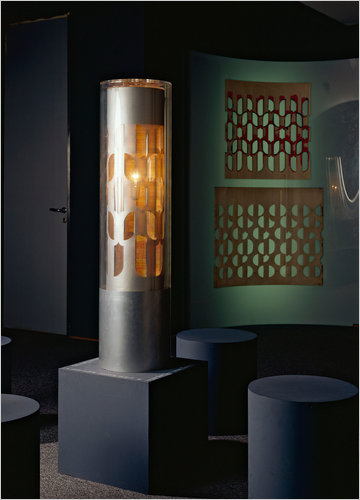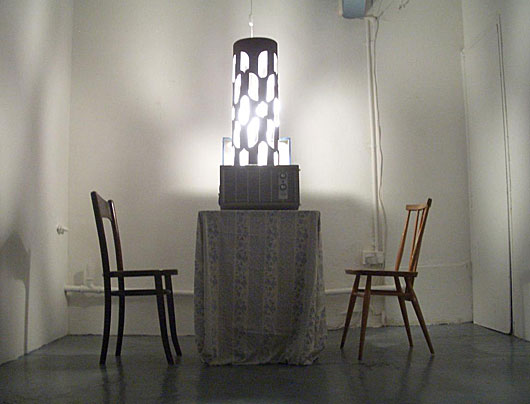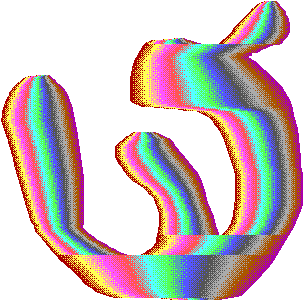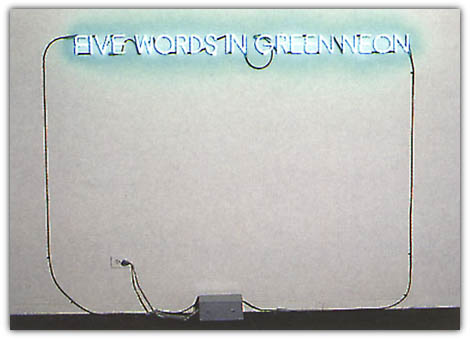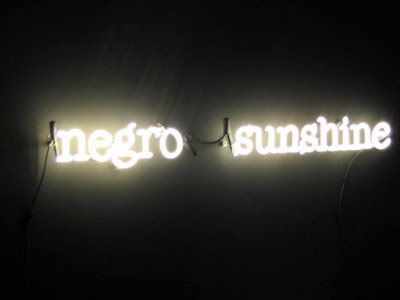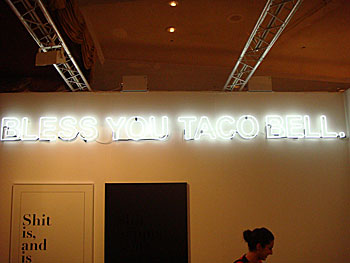Recommended: "Surf Camp: An Amateur-ish Essay on the Sub-Amateur," lalBLOG's response to Duncan Alexander's notes on net art camps.
Am feeling a little bad about posting links in the comments to Alexander's essay that referenced Ed Halter's vague and unnecessary term "sub-amateur," which supposedly describes a new kind of net art practice. After Alexander simplified things so nicely, reintroducing "sub-amateur" confuses them again. I didn't mind Beau Sievers using it that much in his net art outline, especially considering, cough, the examples he chose, but there is really no need for the term "sub-amateur."
"Artist" works just fine to distinguish the aware insider from the unknowing outsider.* Boris Groys talks about a "de-professionalized" professional but never questions that an artist is a trained person who adopts various guises of expertise and non-expertise. (And yes, that could mean self-trained.)
Last year when Paddy Johnson posted on Ed Halter's essay "After the Amateur," where he introduced the term "sub-amateur," I and another commenter criticized the essay. Halter is a film and video critic and gives a good summation of the pro vs amateur distinction in those media, but then stumbles in part 4 of his essay when he applies that scheme to work on the net (which is much more than just film and video).
When Guthrie Lonergan presents photos of some net dude's supersoaker collection as something worth contemplating, Lonergan is the pro and the collector is the amateur. No other term is needed. Halter defines "sub-amateur" as valuing content over form but when Lonergan says "I really like how he [the amateur] presents this collection" that means that its formal qualities and the presentation *do* matter–-e.g., the photos of the plastic guns spread out in a grassy field, but also the links to different angles and stages of the array, absurdly mimicking corporate display techniques. Lonergan is "liking" more than just the Excel-like catalog of data that Halter suggests, I believe. There are precedents in the art world for arranging collections of found plastic (such as Tony Cragg’s work) and the professional ironist web artist could riff on that history to some extent (not that Lonergan is specifically referencing Cragg here).
Halter's "sub-amateur" definition is further confused by applying Lonergan's term "defaults" to everything under the sun. Lonergan's chart about "hacking vs defaults" was meant to distinguish artists who use "off the shelf" software from the older type of net artiste who insists on hand-coding everything. Halter applies "defaults" to any kind of found object, including heads not cropped out of photos and older technologies such as still cameras. In discussing Lonergan’s artwork Internet Group Shot (2006), Halter writes that it "reveals that the snapshot imposes its own social defaults. The convention of the group shot becomes a non-technological default setting for the snapshot." I’m sorry to report the group shot existed before the Internet and Lonergan did not reveal it to us. Instead he showed us something we already know, which is that the Internet is as conformist as it is vast. He did it in a way that makes us laugh with the sheer repetition of the motif and his "good enough" technical skill. This is called being an artist, no other critic-porn term is necessary.
*Update: My definition of "artist" is anyone with formal art training (who actually uses it), and I see plenty of examples of self-aware or critical participation on the Net that I consider art-making. As for insiders and outsiders see here.

